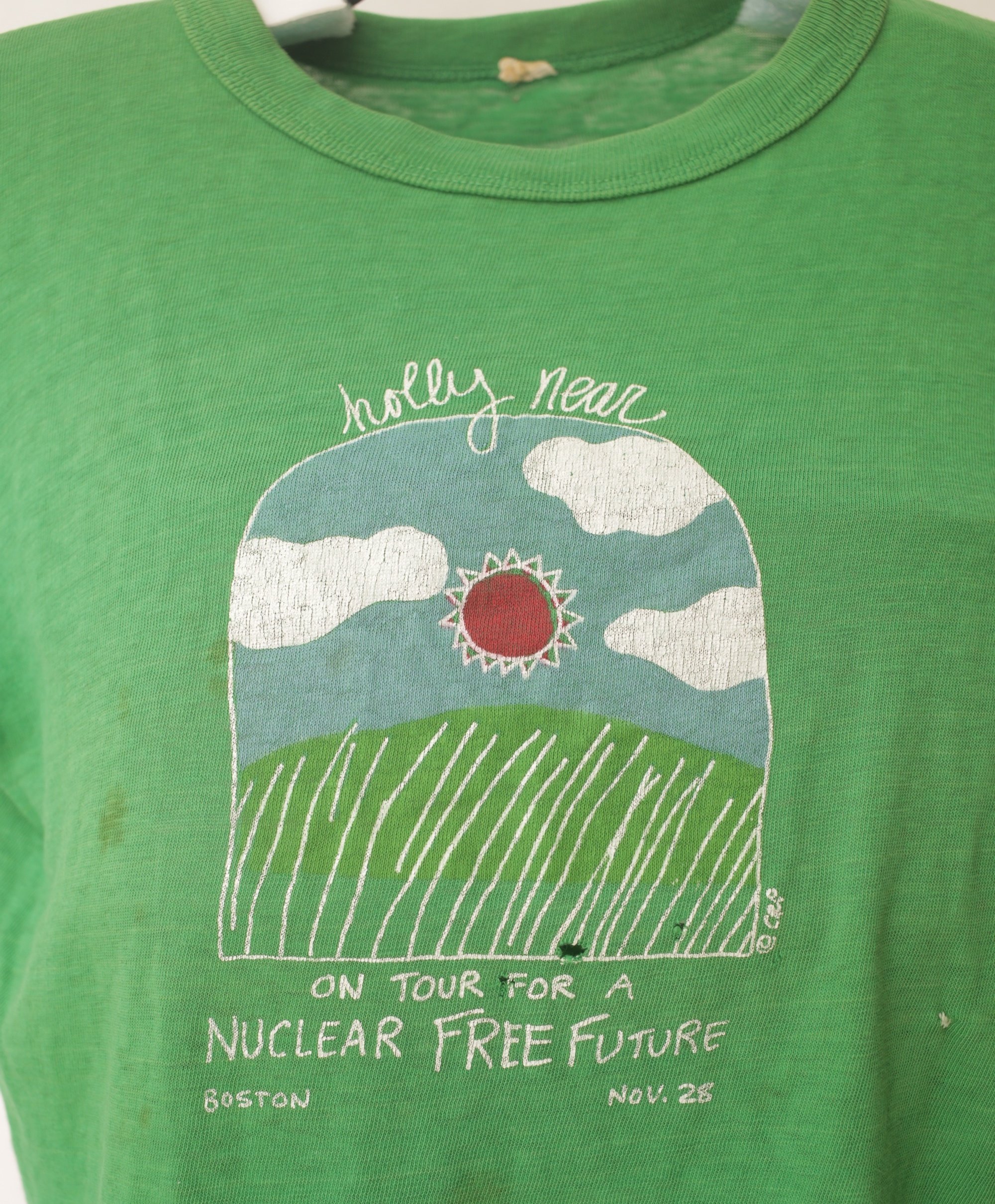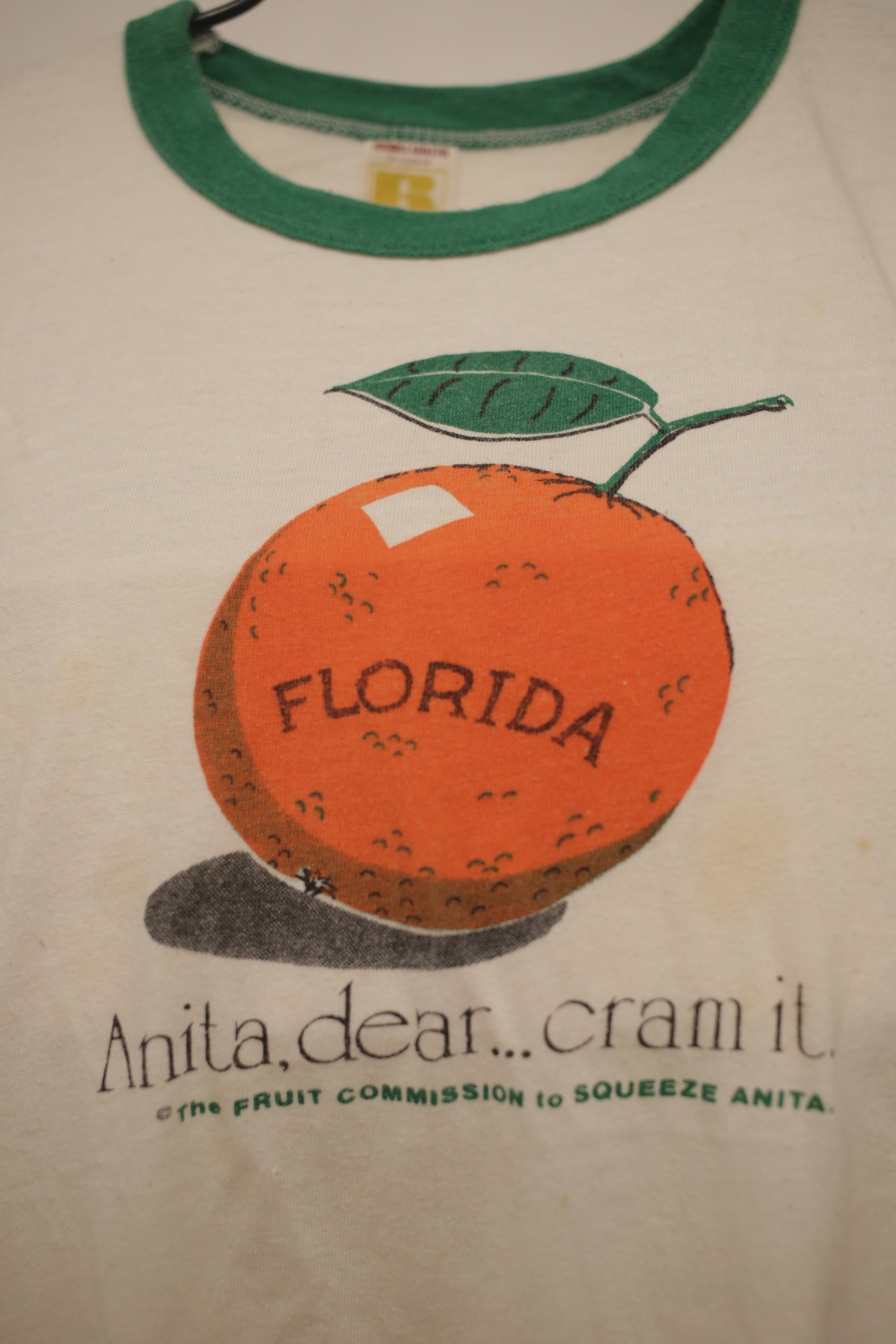Mazer Archives February 2022 Newsletter | Out of the Archives: The Tees Collection
Happy February, friends!
This month, our Mellon-funded UCLA Community Archives Lab archivist intern Hall Frost is highlighting our Tees Collection.
From music festivals, to Pride, sport events, and political marches, our Tees collection has a bit of everything and spans from the 1970s through the 2010s. The wide range of designs and categories means there’s something to resonate with everyone; this nostalgia and connection is one reason this collection is so loved.
For example, maybe you also love Holly Near, or even saw her on the Nuclear Free Future tour in the early 1980s?
Or rallied against Anita Bryant in the 1970s?
Or maybe you love this one because you also neglected your book shelving responsibilities when you were a 16-year-old employee at the local library in order to read Alison Bechdel’s Dykes to Watch Out For, shocked to see a character that looked exactly like you? (No? Just me?)
Or maybe you went to every Dyke March and you remember each one vividly simply by remembering the T-shirt from that year’s event?
Environmental activists, artists, marathon runners, and feminists just wanting people to know where they stand will all find something to appreciate in this collection.
Last year, UCLA Community Archives Lab/Mellon Foundation interns Julia Tanenbaum and Lisa Kahn started the project to rehouse and organize the t-shirts.
They started by washing and sorting the tees. Each shirt is given its own unique ID number and is entered into our database along with notes on condition, theme, and a date, if we can find one.
Hanging the shirts can damage them over time as it adds stress to the seams. We instead wrap the shirts in archival tissue paper, then neatly fold them. This archival tissue paper has a high pH, which will help absorb any acidic off gassing, helping the shirts to live longer lives. The tees are then arranged by their ID numbers in giant boxes that hold 25-30 shirts. An inventory sheet with photos is attached to the outside top of the box, which helps a t-shirt to be found without having to move or rummage through the other shirts.
I took over this project when I became the intern here in September, completing this project (for now!) with 277 shirts in 10 boxes. The range of topics, variety of sizes and styles, in all their varying conditions, including shirts barely worn, to some that were very well loved, tell many stories, even without knowing who wore them.










